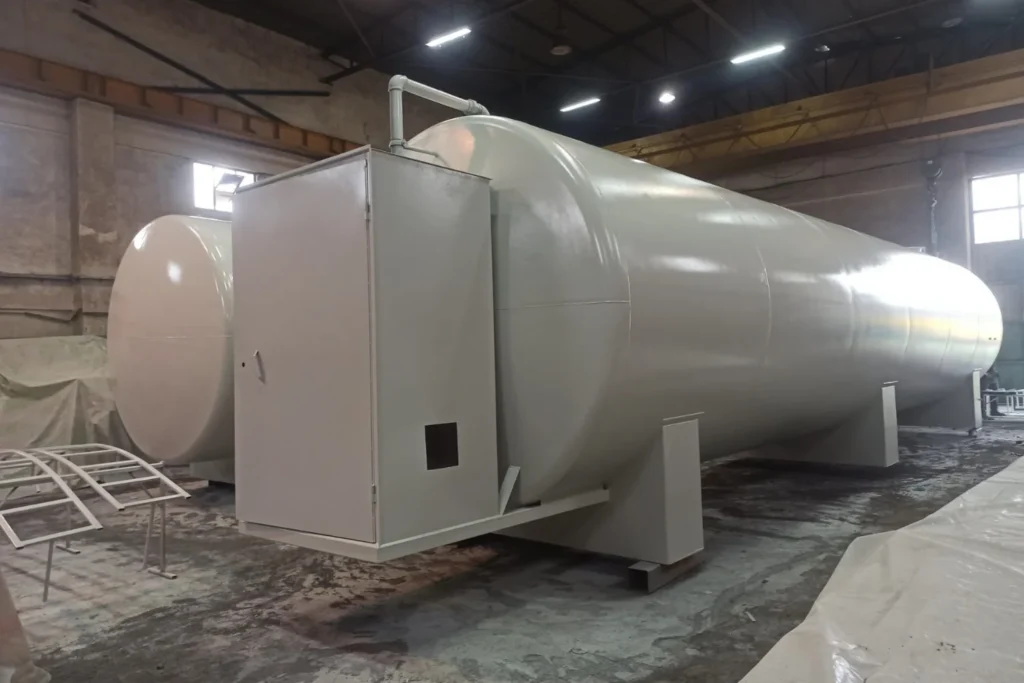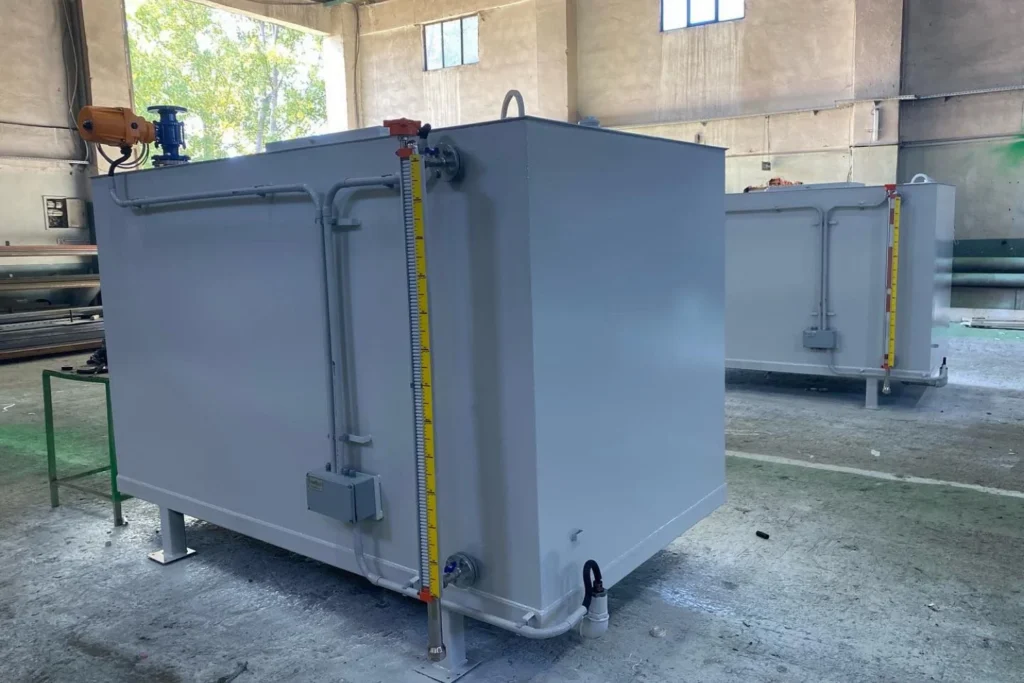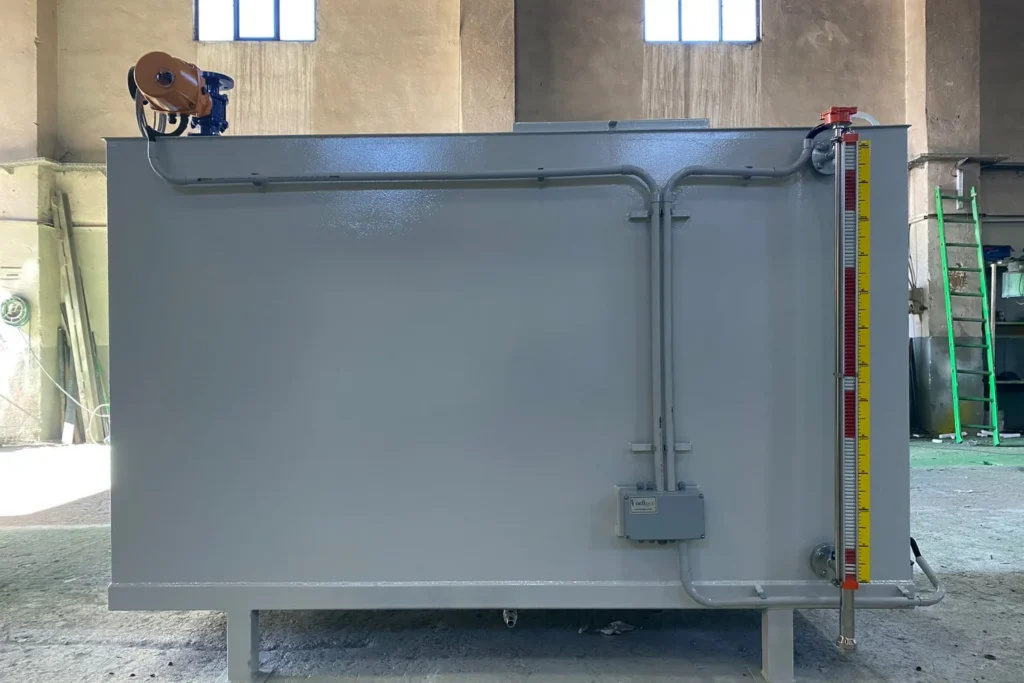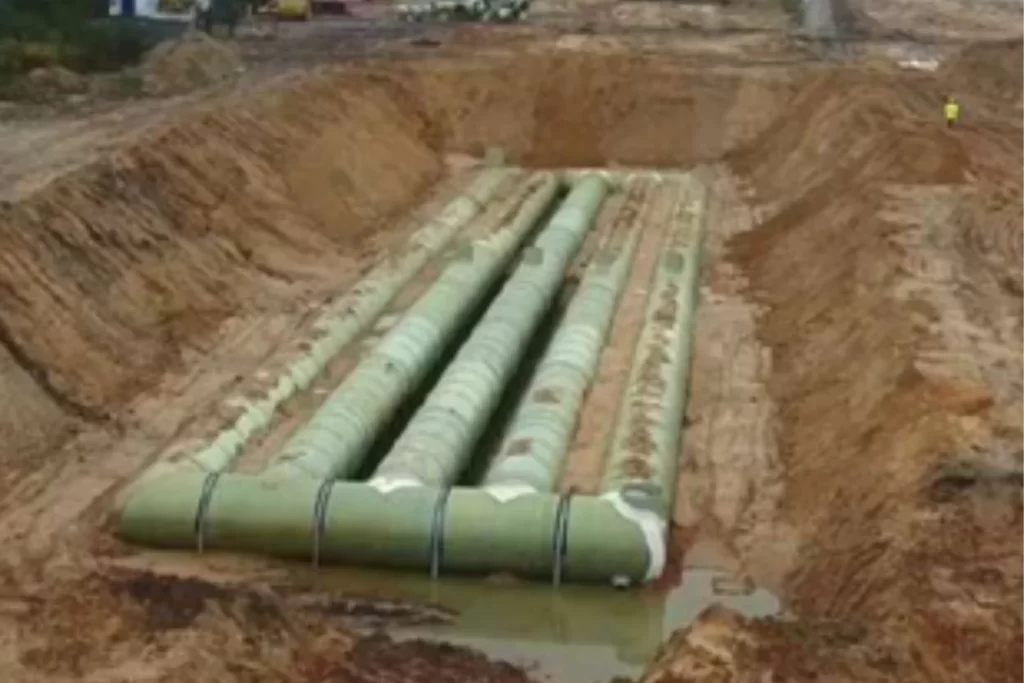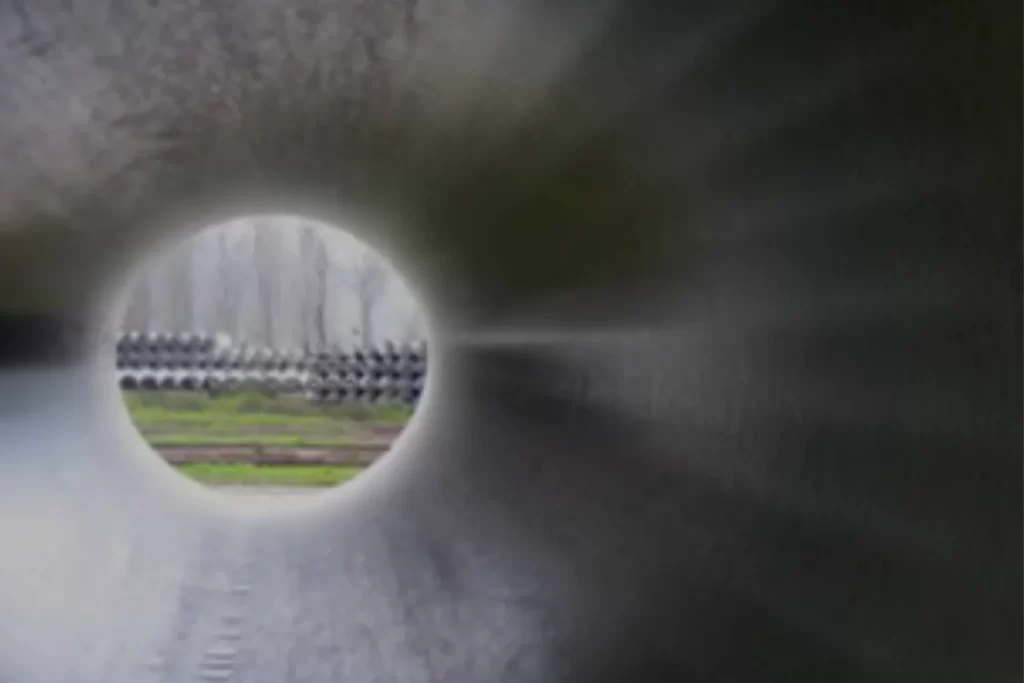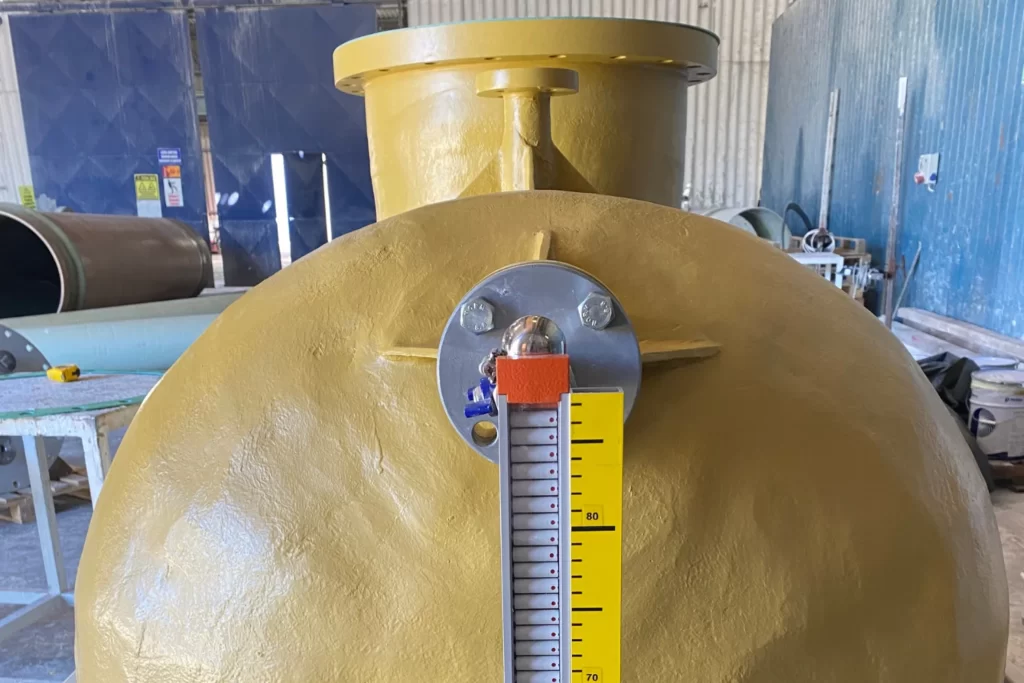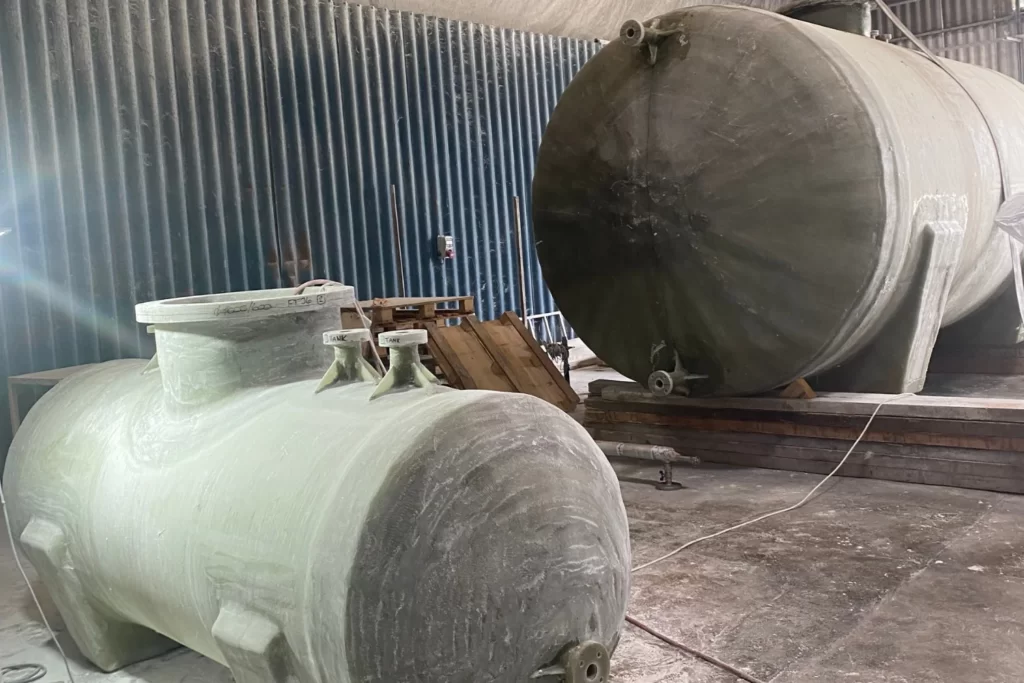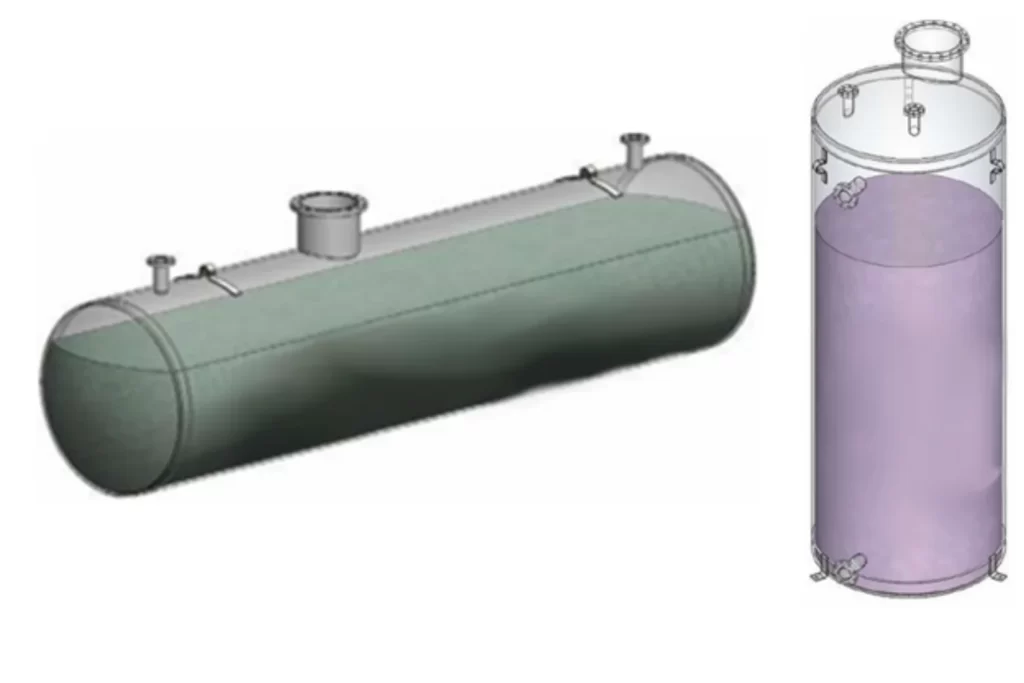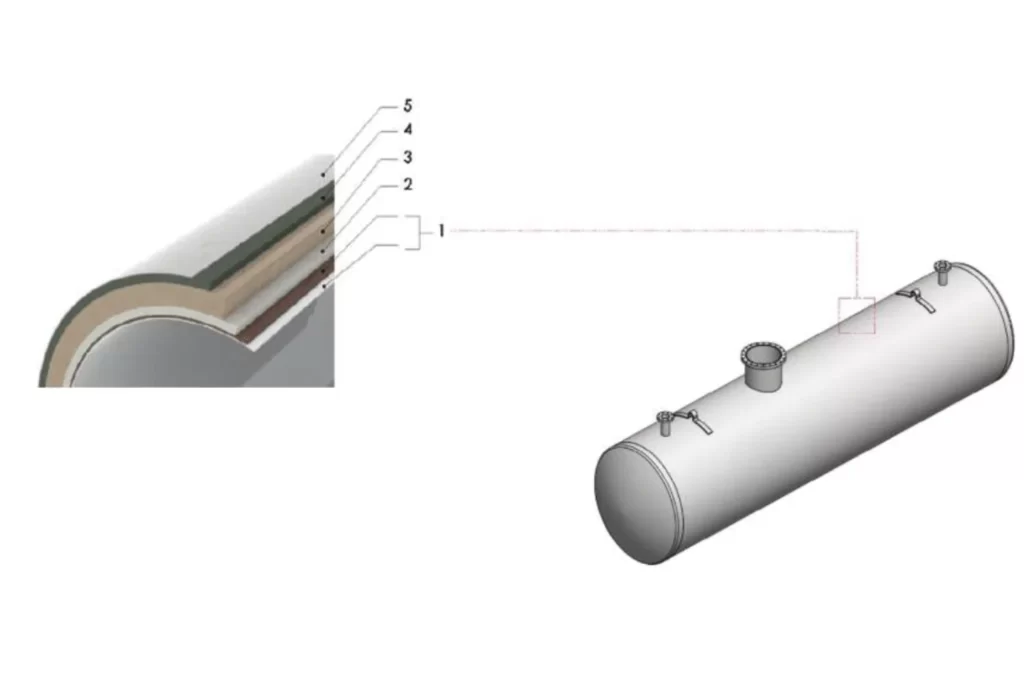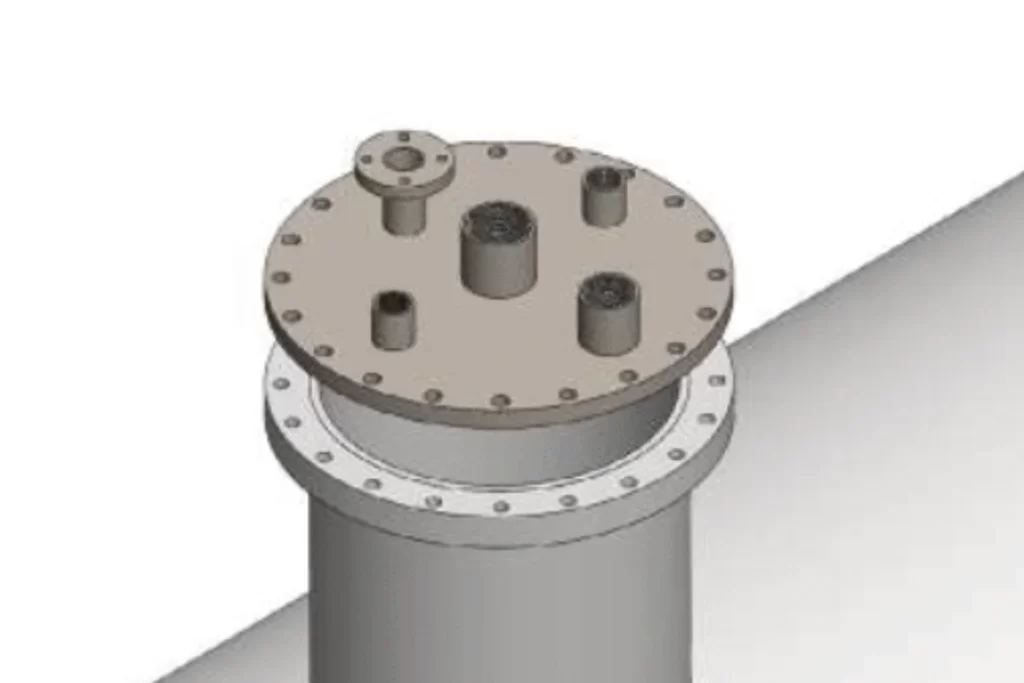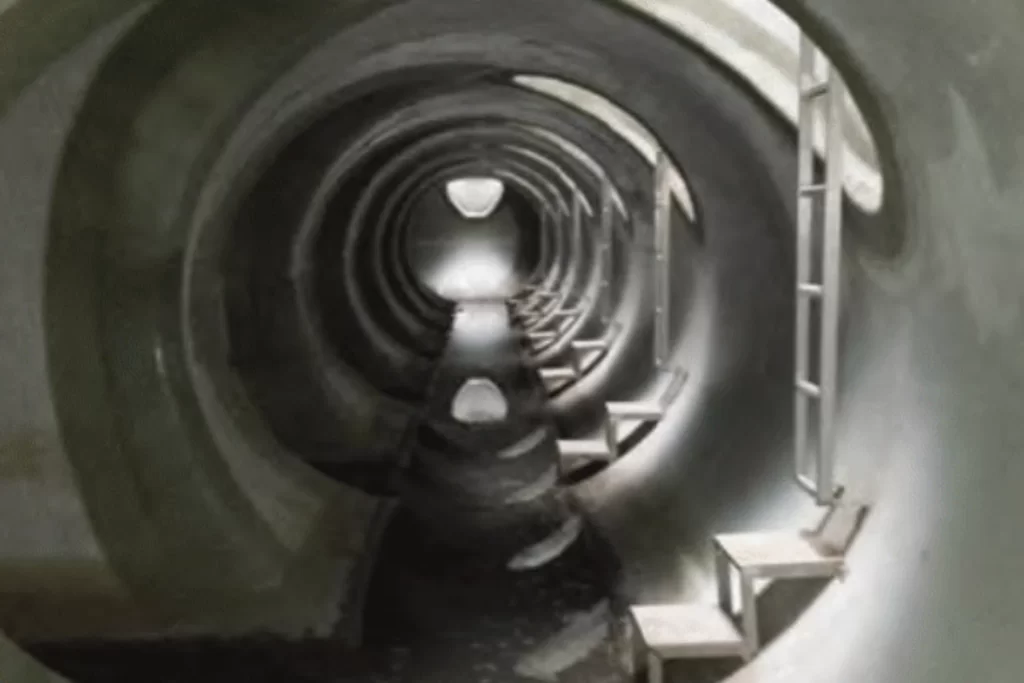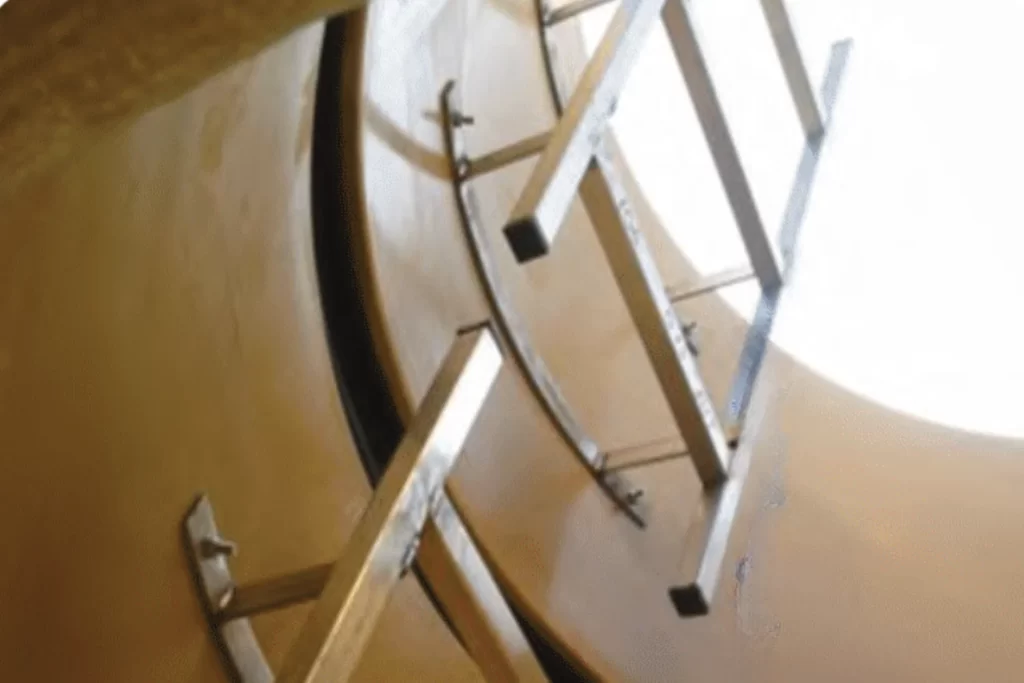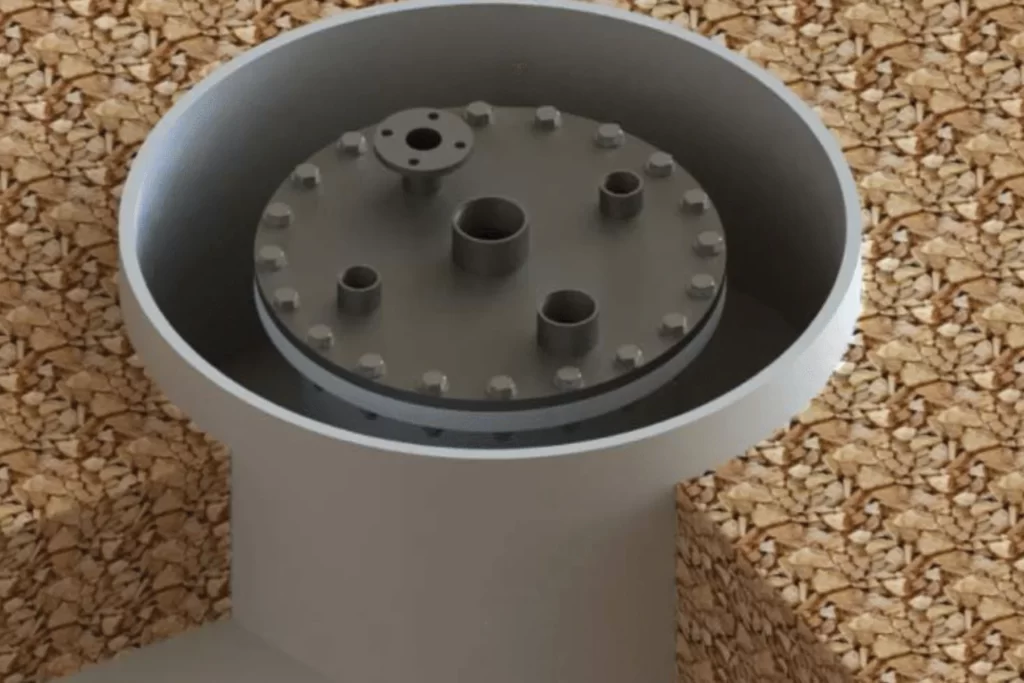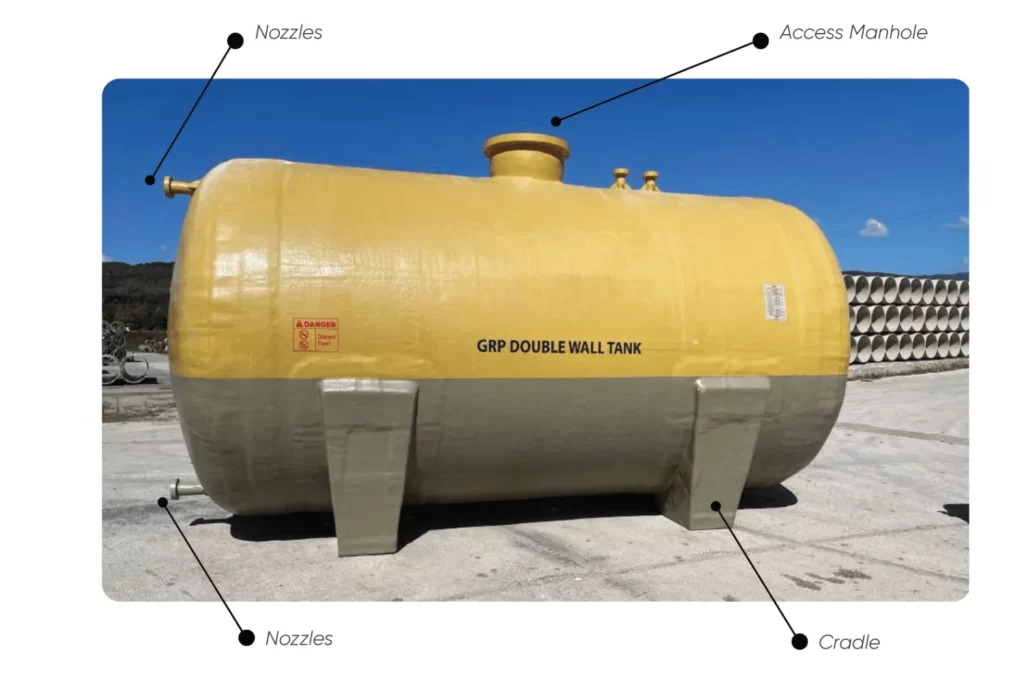Jeneratör Yakıt Tankları Galeri
GRP Tank is a composite material produced by combining glass fibre, thermoset resin and silica sand filler depending on the design and application. These products can be used in many different applications areas due to the advantages of the GRP material.
- Water Tank Application
- Retention & Detention Tank Application
- Petroleum & Industries Tank Application
- Chemical Tank Application
GRP Tank can be specially manufactured according to the purposes of use and de- mand of the project. The GRP tanks are manufactured according to the storage conditions such as underground or above ground as well as produced according to the specific application as single or double wall.
ADVANTAGE OF GRP TANKS
GRP Tank has become the choice of designer due to the advantages compared to Steel, Concrete and Other type of materials. The advantages of GRP Tank composite materials compared with other materials are listed below:
- Non-corrosive composite structure
- Designed to serve in a wide pH range Long service life
- Lightweight
- Strong & Durable UV-resistant
- High abrasion resistance
- Leak tightness at all parts.Prevents fluid transfer from both directions (infiltration-ex filtration)
- Free Maintenance
GRP Tank can be specially manufactured according to the purposes of use and de- mand of the project. The GRP tanks are manufactured according to the storage conditions such as underground or above ground as well as produced according to the specific application as single or double wall.
Thanks to the above advantages of GRP materials, tank systems when compared to other materials will provide additional benefits to the project.
- In high volume tank projects, the tank vol- ume can be achieved by extending the tank body length based on project requirement.
- Full-face couplings connection which is superior sealing performance and easy instal- lation can be used for jointing both main tank body lengths.
- Thanks to its superior external load capac- ity, the GRP Tanks can be installed in various buried depths and this ensures their space availability on ground.
- Low cost compared with traditional tank materials.
- Wide range of accessories
- Fast and easy installation
PETROLEUM FRP – GRP TANK APPLICATION
GRP Petroleum Tank are one of the most used storage options like in many areas due to the advantages of the composite that are now accepted worldwide such as corrosion resistance, lightweight, long life, wide pH range, low maintenance cost etc.) GRP petroleum tank offers suitability for a wide range of petroleum-based chemicals.
Product Benefits
- Equipped with special resin types used in designing the tank depends on the project requirements
- Low cost of management and free maintenance.
- Leak tight system
- Does not conduct electricity; resistant against acid, base and salt attacks.
- Fully resistant against corrosion internally and externally.
- It is possible to produce designs of complex structures
Tank Capacity
Tank can be manufactured in various from DN1000 to DN4000 diameters. The desired volume can be provided according to the project requirements.
Possible Tank Production Models
- Single Wall or Double Wall
- Underground or Aboveground
- Horizontal or Vertical
Chemical Industrial Tank Application
GRP Chemical storage tanks which are manufactured custom made are safe and clean solution to store wide range of chemicals. Depending on the type and temperature of the chemicals to be stored, these tanks can be customized.
Chemical storage tanks can be applied both aboveground and underground applications as single or double wall in a variety of chemical concentrations and temperature ranges.
GRP storage tanks have a very high corrosion resistance. The corrosion resistance of the tank depends, in addition, on the resin selection, the temperature of the media and the concentration of the chemical(s) contained in the media. Tanks are suitable for the respective chemical in higher concentrations and elevated temperatures with resin selection.
The chemical resistance guide in Annex-A, focusing on chemical resistance has been prepared as a general guide only, and the information given should not be used as a design guide in isolated conditions.
SINGLE AND DOUBLE WALL GRP FRP TANKS
Single Wall Tank Body Layers
Internal Liner ( 1 )
The internal liner is a resin rich layer forming the interior layer of the tank to give high corrosion resistance. This layer is reinforced with E or ECR glass fiber and a suitable type of polyester or ECR surface tissue. Liner thickness can be varied upon project requirements.
Structural Layers ( 2 & 4 )
The structural layers consist of glass reinforcement and a thermosetting polyester resin, without filler. The structural wall is reinforced with closely spaced continuous fiberglass filament winding, chopped roving, all impregnated in thermosetting resin. The composition of structural layer depends on pressure and stiffness requirement in general.
Core Layer ( 3 )
This layer consists of glass reinforcement, thermosetting polyester resin and filler depend on project requirement that are included to provide the required stiffness characteristics.
External Layer ( 5 )
The exterior resin rich layer of the pipe is reinforced with surface tissue.
Painting: The outer surface of the tank can be painted according to the project requirements. Requested warning signs & labeling can also be marked.
Painting
The outer surface of the tank can be painted according to the project requirements. Requested warning signs & labeling can also be marked.
The necessary static and dynamic calculations that required of GRP Tank can be performed by Design Team.
Double Wall Tank Body Layers
Since the petroleum fluid is valuable and it is likely to contaminate environment, it is essential to design petroleum tanks with double wall structures including special leak detection system between two wall to prevent environmental pollution, environmental damage and to avoid from the high amounts of charges required to compensate the damage caused.
Double wall produced with two main structures (SHELL) with interstitial gap. Layer composition of the Inner shell wall is same as with single shell wall construction detailed above and additional composite external wall constructed over the first inner shell structure. A gap is created between two shells depending on the leak detection system design and project requirements.

